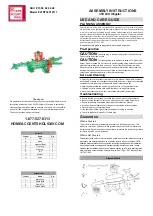
The Weighlog translates pressure (or strain) to weight by means of a
calibration factor programmed into the instrument. The accuracy of the
system depends to some extent on the following :
2.1 Machine requirements
1. Operating Temperature :
Always allow the machine and the hydraulics to
warm up to the normal operating temperature before commencing weighing.
2. Weighing on level ground :
Avoid weighing when on a slope or a side
slope. Wherever possible weigh on a level area.
3. Vehicle movement :
Best results are obtained when weighing while the
vehicle is stationary. It is important that the load does not bounce or jerk as it
is lifted.
4. Maintenance :
Keep your machine maintained in good condition. Things like
excessively worn bushings, pivot pins and slideways, as well as lack of
lubrication to these areas can have an adverse effect on weighing accuracy.
NOTE:
After any major servicing particularly if you have replaced worn components or
carried out welding repairs, you should re-calibrate the weighing system. If the
hydraulic system has been drained and re-filled you should also check for any
air which may have become trapped at the pressure sensor.
2.2 Lifting procedure
The correct lifting procedure is especially important for dynamic weighing.
The load should be lifted smoothly and consistently through the weighing
position. The engine speed should be the same for every weighing. The
engine tachometer if fitted, is useful here.
The best procedure is as follows :
1.
Having picked up the load, crowd (roll) the bucket right back as far as it will
go.
2.
Pull the lift lever right back with the engine at idle.
3.
Increase engine revs to the "weighing speed" and lift smoothly without
bouncing or jerking. Ensure that you lift at the weighing speed as you pass
through the reference position (dynamic weighing).
2 - Maintaining Accuracy
5




































